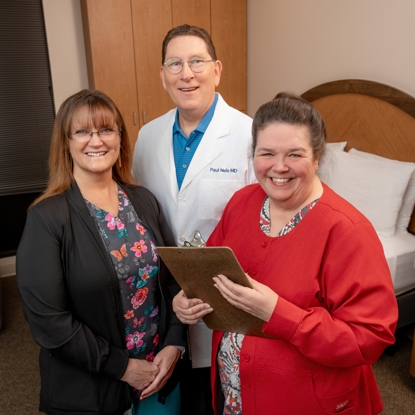Baxter Health Heart Health Services
For more information about upcoming heart health programs or educational opportunities, call the Schliemann Center for Women’s Health Education at (870) 508-2345.
Heart disease is the number one killer of American women (and men), but it’s a disease that in most cases can be prevented.
Some risk factors for heart disease that you can control include:
- High blood pressure – This silent killer increases your risk for heart attack or stroke.
- Smoking – According to the American Heart Association, smoking makes you two to four times more likely to develop coronary heart disease.
- High cholesterol – The higher your cholesterol the greater your risk of coronary heart disease.
- Physical inactivity – Lack of physical exercise increases your risk of heart disease.
- Obesity – Excess body fat, especially around your waist, increases your risk of heart attack and stroke.
- Diabetes – Having diabetes, especially with uncontrolled blood sugar, increases your risk of heart attack and stroke.
How to Recognize a Heart Attack
Women also need to recognize the symptoms that accompany heart attacks. Those for women are often different from those experienced by men. While men are more likely to experience chest pain, symptoms that most often precede a heart attack in women include weakness, shortness of breath and unusual fatigue.
Some of the common heart attack symptoms in women are as follows:
- Shortness of breath, not accompanied by chest pain
- Sweating
- Tightness in chest
- Sudden dizziness or loss of consciousness
- Feeling of heartburn or indigestion
- Stomach or abdominal pain
- Flu-like symptoms, cold sweats and nausea
- Unexplained weakness and fatigue
- Loss of appetite, general discomfort and a feeling of anxiety
- Pain in neck, lower jaw, shoulder and upper back
Click here to download the
Go Red For Women Heart Health Guide.
Click here to download
Healthy Heart Handbook for Women, a publication of the National Heart, Lung, and Blood Institute (NHLBI).






.jpg)





.png)









